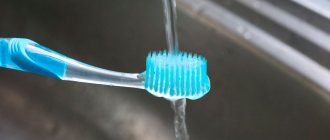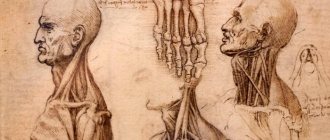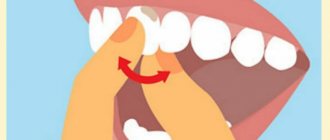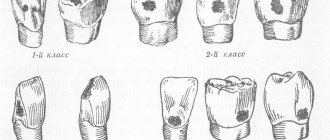Since the punishment and application of the provisions of the relevant article depend on the severity of the consequences received during beatings, it is necessary to accurately determine the severity of the injuries received.
Fractures of the upper and lower jaws are quite common in medical practice. According to statistics, they make up 1/7 of the total number of fractures. This type of injury is more common in young men than in women.
The article provides details of the legal consequences for the offender who caused a fracture of the victim’s jaw.
What is the severity level?
Head injuries can lead not only to damage to the victim’s health, but also create a risk situation for his life. Here are located the muscles, joints and bones of the jaws, directly connected with the digestive tract system, as well as with the speech organs, which are actively involved in a person’s full social life.
Therefore, injury to the maxillary region of the face causes a double blow:
- Deprives the victim of the ability to fully eat food and maintain the natural nutrition of the body.
- A person is not able to pronounce articulate sounds, which means he is unable to communicate verbally with the surrounding context for a long time.
Providing standards for determining the health status of an injured citizen is based on special Rules approved by the Order of the Ministry of Health and Social Development dated April 24, 2008. According to the Rules, medical criteria for injuries are approved and reflected in a special Appendix to the designated Order.
According to the conclusions obtained during the expert's examination, the severity of the injury is established. If the jaw area of the face is injured during beating, the severity of the consequences is determined to be medium .
That is, over a long period of time, the victim’s body is capable of recovery.
If the violations turn out to be reversible, Article 112 of the Criminal Code of the Russian Federation comes into force, reflecting the norms of liability for damage to health of moderate severity.
However, such violations may be multiple, since the jaw mechanism is quite fragile. When struck with a blunt object, parts of the jaw can break off and subsequently be artificially implanted.
With subsequent restoration, certain functions may be irretrievably lost:
- chewing;
- speech
This creates a significant complication for the situation not only of the injured person, but also of the attacker, whose punishment is already considered in the context of the provisions of Article 111 of the Criminal Code of the Russian Federation - grievous harm to health.
Many organs, including hearing and vision, may be completely or partially unrecoverable if a fracture of the jaw bone damages the hearing organ or the optic nerve. For example, when crushed by a heavy object or a gunshot wound. In addition, there are cases when, from a strong blow, a broken jaw bone penetrates the throat with a sharp edge, which can not only cause harm to health, but also create a threat to life or lead to death.
The provisions of Articles 111 and 112 of the Criminal Code of the Russian Federation come into force only if the strikes are intentional, leading to injury. For intentional beating with consequences in the form of a broken jaw, if they were defined as serious or moderate injuries, liability begins at the age of 14 according to Article 20 of the Criminal Code of the Russian Federation.
What needs to be done during the rehabilitation period?
- After the operation, it is allowed to eat exclusively liquid food and broths: it is recommended to eat food through a straw. Later, when the splint is removed (after about 21 days), you are allowed to eat food that has been blended and has a pureed consistency, as well as ground meat. A gentle diet must be followed for at least another month from the moment the tires are removed,
- you cannot open your mouth and strain your jaw: you will have to say “no” to meeting friends, communicating with colleagues, talking and laughing,
- it is necessary to follow the recommendations of doctors and take prescribed medications and drugs,
- It is important to undergo a course of physiotherapy procedures that promote accelerated tissue restoration: they can be carried out no earlier than 3–5 days after surgery. This could be magnetic therapy, electrophoresis,
- physical therapy: it is done after removing the fixing splints,
- undergoing routine examinations: they are carried out at least once a week until complete recovery.
Do not open your mouth or load your jaw
Qualifying characteristics and responsibilities
Under Article 112, punishment without qualification is determined to be up to three years in the form of:
- imprisonment;
- correctional labor;
- restrictions on freedom.
Arrest for up to six months is also allowed. If the consequences are typical for the provisions of Article 111, then imprisonment in places of imprisonment for up to 8 years follows.
Qualification here refers to the following criminal acts:
- special cruelty when beating;
- the use of weapons or objects used to intensify blows;
- group beating;
- causing injury to several victims;
- hooligan actions.
This category of illegal acts also includes beatings of persons based on religious, racial, political, or national hatred. Or committed out of hatred for a certain social group.
Qualification is also charged when injuries are inflicted:
- to a minor;
- a person known to be in a helpless position;
- pregnant woman.
Qualification gives an additional degree of responsibility, increasing the terms of imprisonment to five years for consequences of moderate severity, and for grave consequences - up to ten years. The punishment reaches the maximum level if the face is disfigured.
And if the victim of the crime belonged to the category of specialists working with a public audience, then in the case of an irretrievably lost part of the speech functions, which led to a violation of its purity and articulation.
If consequences are obtained that are not comparable with the functioning of the life processes that led to the death of the person, the punishment can reach a twelve-year prison term. Such consequences in case of a jaw fracture can arise due to harm to health, resulting in side effects, when bones are crushed with rupture of the nasopharynx, larynx or throat.
How to take care of your mouth and brush your teeth while wearing a splint?
Often patients are given a splint that tightens the upper and lower rows of teeth. Therefore, difficulties arise with daily care of teeth and gums. However, it is necessary to maintain hygiene, because a number of studies1 show that after wearing splints, many patients experience periodontal inflammation, as well as caries if hygiene was lacking.
Hygiene can be carried out using antiseptics and rinses that are used to rinse the mouth. To clean teeth and dental structures, you need to buy a brush with soft bristles and a brush. It is also recommended to purchase an irrigator that will help thoroughly rinse the mouth from food debris. True, you can use it no earlier than 10 days after the operation, and only on the most gentle regimen. It is necessary to rinse and irrigate up to 8–10 times a day.
Discrimination from other types of harm
Unintentional harm is considered under Article 118 of the Criminal Code of the Russian Federation. Sometimes the victim is recognized as the initiator of the fight who provoked the beating.
Such cases provide for criminal liability:
- according to Art. 113 – actions in a state of passion;
- under Article 114 – exceeding the necessary self-defense.
Simple injury leading to the indicated consequences is considered in the context of the resulting harm. If there is a crime under Articles 118, 113 and 114, the punishment allows you to avoid imprisonment, especially if the function of the jaw is fully restored.
In this case, the punishment may be limited to fines, arrest for up to six months, or correctional labor for 2 years. Its maximum amount is expressed in imprisonment for a term of up to three years.
In addition, if a fight occurs deliberately, minor health consequences may occur in accordance with the provisions of Article 115 of the Criminal Code of the Russian Federation. This standard applies if the victim’s jaw has received a minor crack that does not require long-term recovery. The maximum penalty here is up to two years in prison. Mostly fines and administrative (mandatory) work are imposed.
If the victim was subjected to painful long-term torture, leading to similar consequences in the form of a jaw injury, punishment may follow in accordance with the provisions of Article 117 of the Criminal Code of the Russian Federation.
Difference between mandibular and maxillary fracture
When determining the degree of severity, which significantly affects the application of the article of the Criminal Code of the Russian Federation, complex damage commensurate with the damage caused, including in the area adjacent to the jaw, is primarily considered. However, blows to the upper jaw, leading to injuries, are primarily considered in the context of the norms of Article 111; equivalent consequences for injuries and fractures of the lower jaw may be suitable in terms of the severity of harm to health to the norms of Article 112.
When the total amount of damage is detected in the upper jaw, the Lefort or Wassmund classification is used, which determines the nature of the violations in three categories.
A special technique in this case is required due to:
- in this part there are more nerve endings that lead to facial paresis;
- destruction of this part of the face often affects hearing and vision;
- Here the soft tissues of the face are concentrated as much as possible.
In addition to the above, blows to the face in this area lead to concussions, sinusitis and other, including potential, negative consequences.
How to remove beatings?
To impose punishment on the attacker, the beating must be removed. This procedure can be carried out in different ways.
In the first case, the step-by-step algorithm is as follows:
- Immediately upon injury or the next day, contact the police station.
- Receive a referral from the police station for examination at the Bureau of Forensic Medicine.
- Approach with your passport and a referral to the Bureau for examination.
The second option is suitable for those citizens who do not plan to contact the police, but intend to seek justice on their own.
What is required here is:
- Apply with your passport to a paid medical clinic to a specialist of the appropriate profile.
- Go through an examination and receive a conclusion certified by the signature and seal of the institution.
The legal capacity of an expert opinion issued in a municipal and private institution is equivalent.
Attracting an attacker
When contacting a police station or calling a patrol to a crime scene, documentation for punishing the criminal is prepared by the local police officer of the district department where the crime was committed.
Such situations require the victim, in addition to contacting the police, to do the following:
- Approach the police station to write a statement, testify against the offender and receive a referral for examination.
- Undergo an examination and obtain an expert’s opinion on the presence of injuries and the severity of them.
- Provide all possible assistance in the investigation of the crime.
If the victim is admitted to a hospital, then the request to the police is submitted to the medical staff of the medical institution.
Police respond to a request to investigate a personal injury. For the most part, the victim of a crime is not capable of giving oral testimony.
Whenever possible, investigators limit themselves to written information. Being in serious condition, the victim does not become defenseless. In this case, the initiative to investigate is taken by employees of the investigation department, as well as relatives and others interested in restoring the violated rights of the patient, friends and random witnesses to the incident.
Based on the formed case, criminal proceedings are initiated in court. The case materials are transferred to the district court at the offender’s place of residence. The victim is invited to testify in court. If he continues to stay in hospital or his speech functions have not been restored, a corresponding medical certificate is presented to the court.
The court accepts for consideration only cases that establish the identity and place of residence of the offender.
If the injuries received do not require a hospital stay, the victim has the right to go to court on his own, bypassing the police investigation.
To do this he needs:
- Contact a private specialist for an examination and get an opinion.
- Independently collect evidence of the offense and information about witnesses willing to testify in court.
- Submit to the district court at the defendant’s place of residence a statement regarding the fact of the commission of the act, attaching the collected evidence and a list of witnesses to the beating incident.
- Speak in the debate. Or - submit a medical certificate about impaired speech functions and written testimony certified by signature.
Based on the information provided, the court decides to impose a proportionate punishment or finds the suspect innocent.
You can challenge the decision of the district court in a higher court, including the cassation court.
Treatment
If a vertical
,
comminuted
,
oblique
root fracture, treatment almost always consists of urgent tooth extraction. All fragments are removed and the cavity is inspected.
When horizontal
In an ideal situation, during a fracture, the pulp remains viable, and along the fracture line, over time, a so-called “callus” is formed from dentin and cement. The prognosis is favorable for a crack at the root - the symptoms of the disorder may coincide with a fracture. Doctors check the integrity of the pulp and try to leave the unit with a intact vascular bundle. The tooth is splinted (immobility is ensured) for a month or a little more.
The damaged nerve fibers are removed and the tooth is also immobilized under constant supervision. Dentists use every opportunity to preserve the dental unit. But, if an x-ray shows a lack of healing (fusion of fragments does not occur) or the appearance of an abscess is diagnosed, then the tooth is removed. According to indications, immediate or delayed implantation is possible.
Often, a patient comes in when a tooth has broken at the root. If the root is intact, it is possible to install a crown on a pin. If a fracture of the tooth root is established, then it is necessary to remove it and contact an orthodontist to select a prosthetic method.
Nuances
If the root of the front tooth is broken, the treatment will be similar to the general protocol. When the unit cannot be preserved or therapeutic treatment is required, crowns (or fillings) are selected to closely approximate the natural shade.
Dentists recommend seeking help if strange discomfort or periodic pain occurs: if the problem is detected in time, it will help maintain the health of the dentition.
Doctors at the clinics of the German Implantology Center diagnose a tooth root fracture at the first visit; further treatment depends on the complexity of each specific case.











